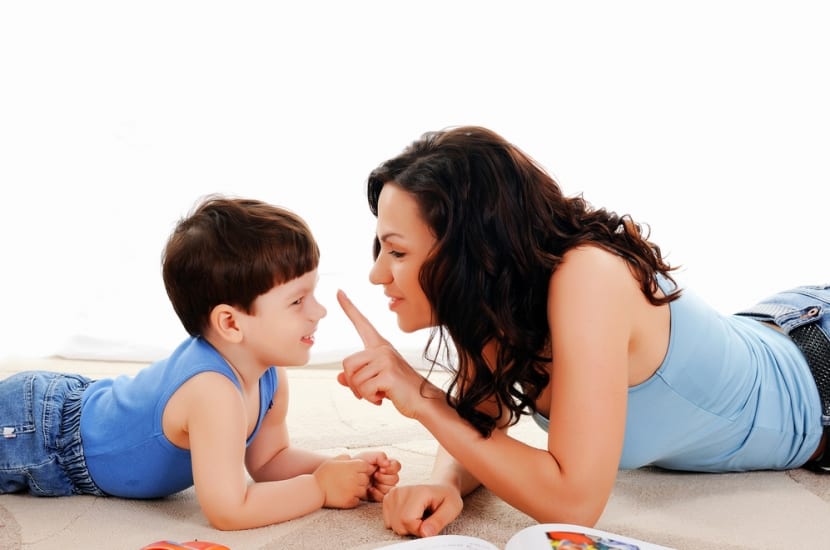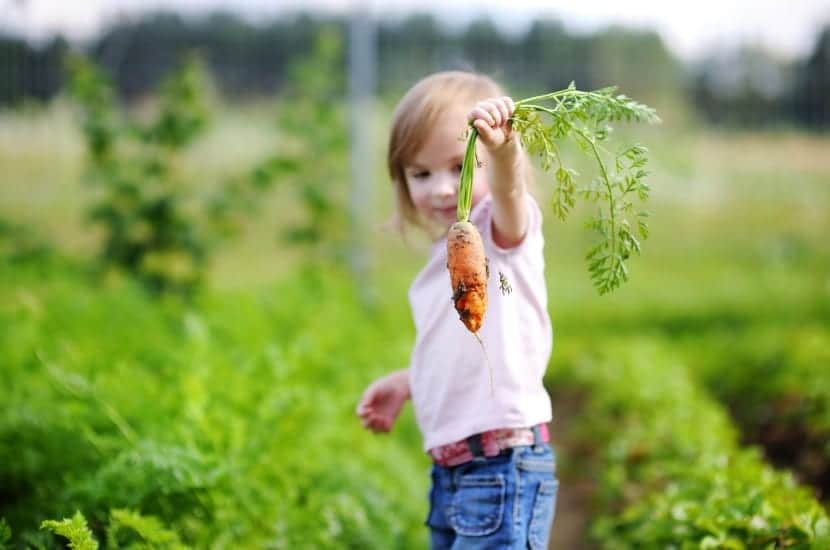Most of us know or have heard of the Montessori Method. The advantage is that it tends to stray a bit from traditional methods of education, by endow the child with a very special independence where the adult almost always acts as a guide.
We are facing a type of pedagogy where responsibility is valued, both of the parents themselves and of the child themselves to learn to be independent. And to be independent we must above all give them the opportunity to explore, to interact, and especially to enhance their curiosity. In "Madres hoy» we want to explain to you how you can apply the Montessori method at home, to educate children between 3 and 6 years old.
Curiosity as a weapon of power and parents as promoters
If there an essential aspect of the infant brain is its great potential to learn, and the means to articulate these learnings is undoubtedly to channel their curiosity. If we apply a type of parenting where we constantly prevent our children from touching this and that, or from staying still, we will be "limiting" their opportunity for growth and learning.
"The first task of education is to shake life up, but to leave it free to develop."
Maria Montessori
What then is our role as mothers and fathers? Keep these simple principles in mind that Montessori herself left us, and that, without a doubt, you already apply on a day-to-day basis.
- A child who feels loved feels safe to explore the world
- Always listen to your child when he approaches with a question, have time for him every day.
- Respect your child even if they made a mistake. Never sanction him in public.
- You must be willing to help your child when he wants to find something. Now also it's just as important that you allow him to find things on his own.
- Avoid criticizing your child. In doing so, the first thing he is going to learn is to judge himself.
- If you praise him consistently and when he deserves it, he will learn to value himself.
- Make sure your children feel safe at every moment. A confident child feels more confident to explore the world through curiosity.
- Listen to their opinions and value them. That way you will feel integrated and know that your voice, your words, are important.
Children Ages 3 to 6: An Absorbing Mind
María Montessori spoke to us about the importance of the sensitive periods included in the child's life up to the age of 6. If your child is at this age, you should know that You will never have such an intense opportunity to develop emotionally and intellectually again.
It is during this very interesting period when your children will assimilate the world around them, and you must be their guide. The architect of each of her steps, where you must be able to create and not limit, where to favor and never overprotect.
- From the age of 3, curiosity in children acquires a determining power. In the third year there is already a greater cortical development, which gives way to a wonderful neuronal maturation. The neurons of three-year-olds are capable of responding to much more complex behavior or behavior.
- Between 4 and 5 years: at this time children are already aware of themselves. They develop magical thinking, where curiosity is a true weapon of power. Also keep in mind that at this age they will have many emotional and recognition needs.
- Between 5 and 6 years: it is a time when friends already have a very important value. They develop bonds of friendship and enjoy playing with their peers. This is when we should facilitate their socialization, a very appropriate way to enhance their emotional intelligence as well as their "social curiosity"
How to apply the Montessori Method at home to enhance curiosity

A prepared environment
We know that the Montessori method is applied especially in a certain type of classrooms, where It seeks to promote the freedom and exploration capacity of the child. Now, but can we do the same at home without spending a lot of money?
Of course. These would be the next points to consider.
- Between 3 and 6 years we have very restless children, and therefore, we must control all kinds of risks.
- It is important to balance the opportunity for interaction with limiting hazards.
- The home can be structured into areas of daily interest to the child. We can enable areas that are always at your level and that can serve you to interact, work and learn.
- Your bedroom is your play area. It is vital that they take responsibility from the age of 3 to maintain order. Encourage them to pick up their toys after use, to worry about having the bed made, to help you put away the clothes.
- We can have an area related to nature. A space where there are plants (even if it is a simple tray with containers of yogurt where we plant seeds such as chickpeas or lentils)
- Another area will be dedicated to reading. It will be your drawer with books.
- Another area will be the one for the kitchen. There they can have their tray with fruits, with fun silicone molds to make muffins, which they can prepare with you.
It is essentially about involving the child in all the household chores. In this way we encourage their curiosity and responsibility.
A daily challenge to foster curiosity
In our previous article on «Montessori pedagogy for children between 6 and 12 months»We were talking to you about the convenience of creating a "surprise drawer" where to introduce a new and different object every day.
On this occasion, and as the children grow, we must increase the complexity. Nevertheless, is an ideal strategy with which to encourage emotion, challenge, responsibility and curiosity of the kids. Now, remember that to get good results, it takes dedication on our part.
How can we do it? What should the curiosity drawer contain?
We do not need to invest money. Our imagination is the best resource, and a wonderful way to bond with our children.
- Can be a little challenge, a test with a final reward. Hide him some candy, some sweet or any "detail" that he must discover following some guidelines: in the recipe book on the shelf there is a clue, that clue will take him to another corner of the house, until little by little he finds his treasure.
- Another day we can place in our box of curiosities a «responsibility». Whether through a drawing or a small note, we can offer the child a new responsibility at home that makes him feel useful and integrated.
- In the box, You can introduce things like "a seed to plant", "a craft", "a book" every day and even simple cards where you can graphically tell him how much you love him and how proud you are of him.
Something as simple as placing this trunk of curiosity somewhere in the house will make your child feel motivated every day to learn and discover new things. And you will be your guide, you will be its daily creator of emotions and joys.
Also do not hesitate to encourage him to leave his things in that trunkIn this way we establish a family interaction from which we can all benefit. Do you dare to start the Montessori method at home?


